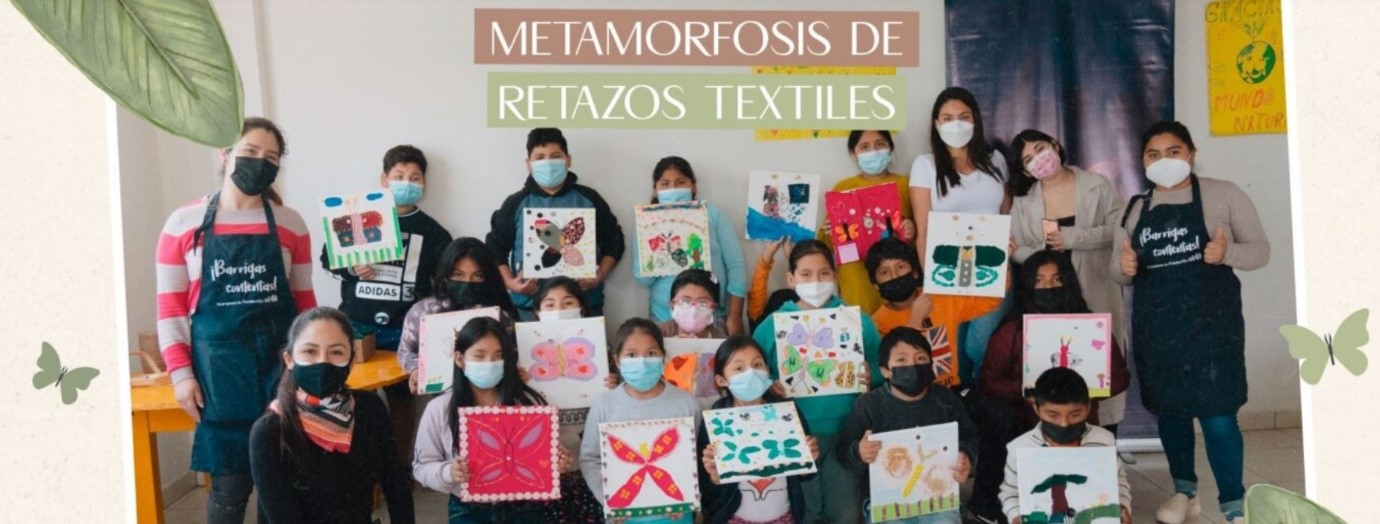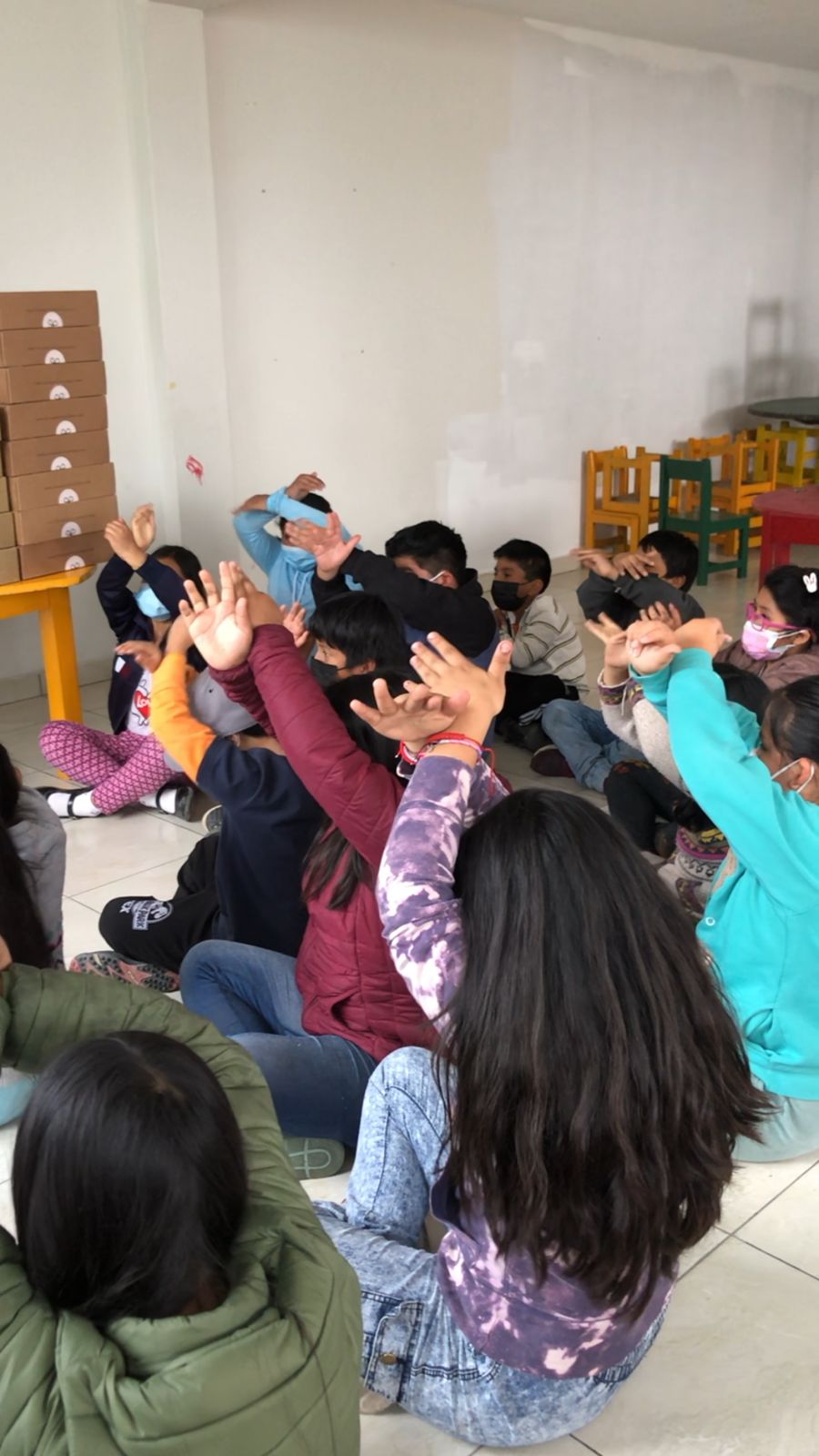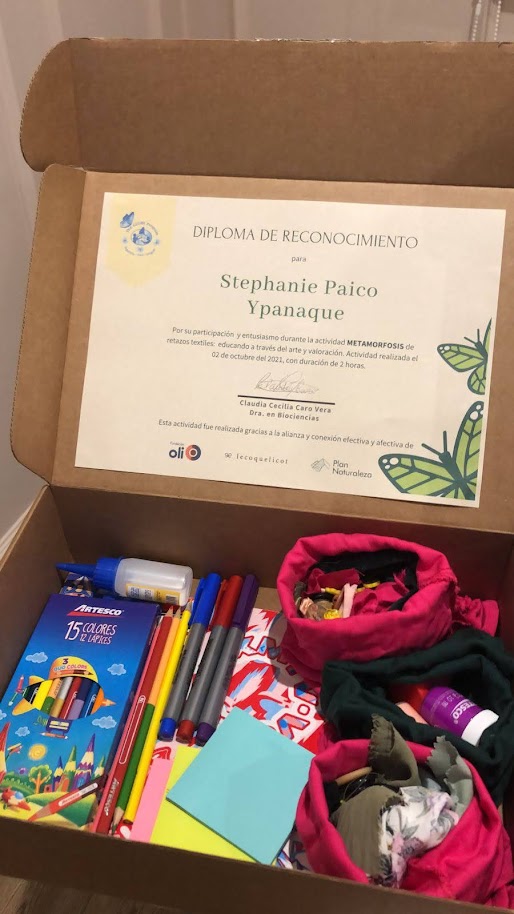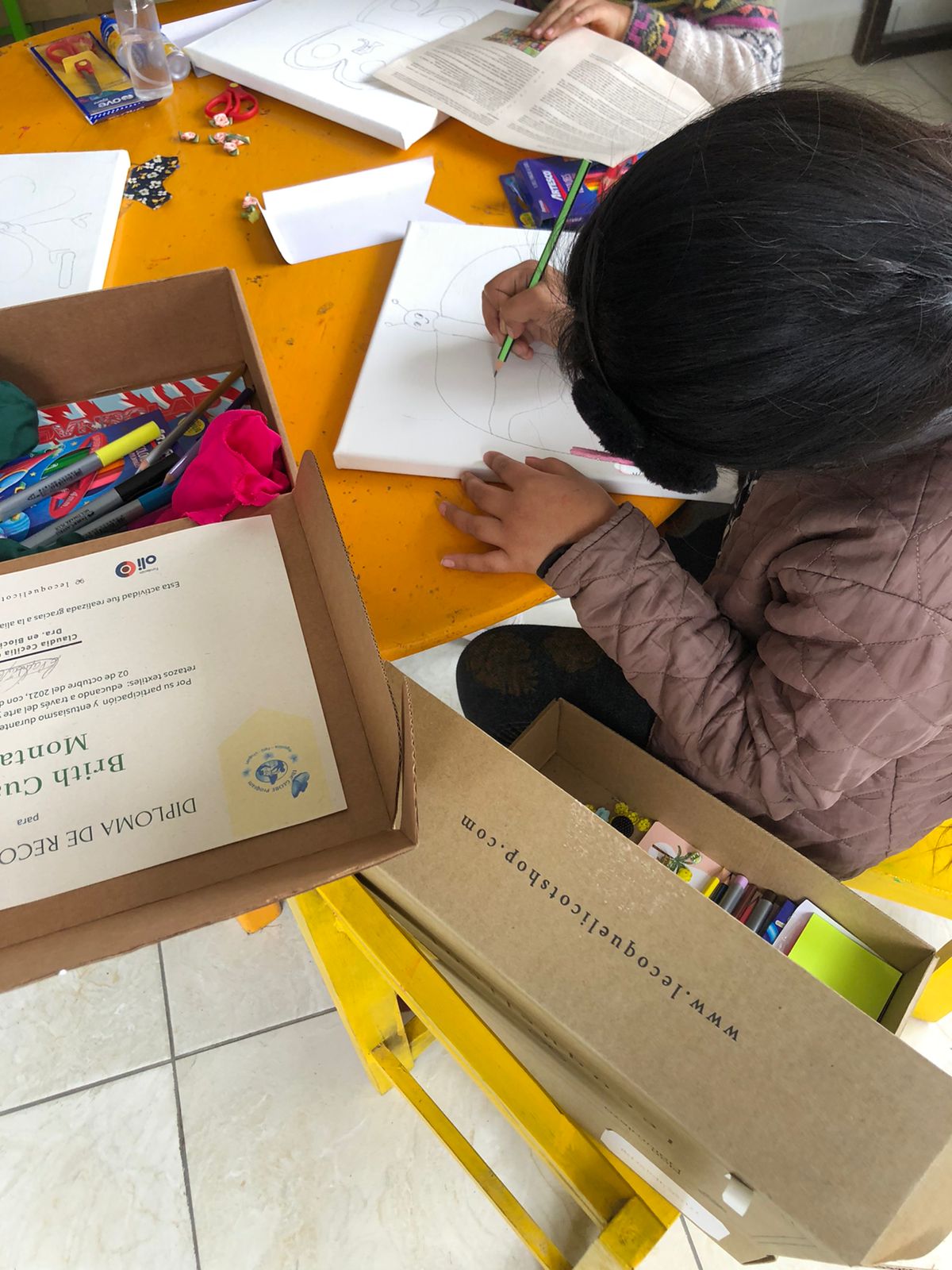Stars and STEM Stories
GLOBE Peru “METAMORPHOSIS” Activity Creates Effective and Affective Cross-Border Alliances to Educate on Sustainability

On 02 October 2021, 15 students (ages 9 through 11) from the district of Villa María del Triunfo, in Lima, Peru, participated in a collaborative, cross-border effort called “METAMORPHOSIS.” This creative endeavor was the result of an alliance between the “Belly Happy” Program of the Fundación Oli (which provides food to areas in need) and the companies: Plan Naturaleza and Le Coquelicot Shop.
In 2020, the Uruguay Country Coordinator, Andrea Ventoso; the Argentina Country Coordinator, Marta Kingsland; and GLOBE teachers, Darío Greni from Uruguay, and Claudia Caro from Peru, came together to launch the project: “Butterflies and Environmental Variables.” The aim of this project was to determine the most common species of butterflies in Argentina, Peru, and Uruguay. The goal was also to identify species common to these countries, and to categorize the environmental variables that most influence their distribution and abundance. This project was crafted within the framework of The GLOBE Program, and served to inspire the company Plan Naturaleza to design the METAMORPHOSIS activity.
“The objectives of the collaborative GLOBE effort, “Butterflies and Environmental Variables,” was to encourage our students to improve their inquiry abilities in a collaborative way by researching about charismatic species like butterflies; to increase the information about the distribution and abundance of butterflies in our countries; and to produce models of butterfly habitat distribution by establishing a relationship between the observation of butterflies and atmospheric variables,” GLOBE teacher Claudia Caro said. “This inspired the METAMORPHOSIS activity.”

“The main objective of METAMORPHOSIS is to educate children through art and the valuation of scraps of fabrics using, as a main theme, butterflies,” Claudia Caro said. “Through a serie of four steps, participants had the opportunity to connect with art, learn more about the role of butterflies in the ecosystems, reuse scraps of fabrics, and contribute with resources to improve the amount and quality of food for their families and their district.”
“In the first step of the activity, called “Activation,” the children had the opportunity to develop their creativity using the movement of their bodies through choreography that simulated the butterflies’ flying. The goal of the second step, called “Development,” was to increase the knowledge about butterflies using storytelling as a learning tool. In this part, through a short story, Marilina, a yellow butterfly of the specie Phoebis philea, told to the children the most important aspects of the biology and ecology of butterflies.”
“The third step included the “Transformation” of the scraps of fabrics into pictures of butterflies. In addition, each picture had children's wishes inscribed in them. It is important to mention that this phase was possible thanks to the donation of creative boxes offered by the cloth company Le Coquelicot Shop. In the fourth step of “Valuation,” participants sought to recognize and value the work of children.”
“The pictures of butterflies created by children as part of the activity are being shown, and are selling virtually. Funds collected through this sale will go directly to provide food to improve nutrition of families in the district of Villa María del Triunfo. In this way, the METAMORPHOSIS activity contributes to U.N. Sustainable Development Goal, or SDG, 2, which is Zero Hunger.”

“The impact of the activity on society is translated in an educational offering that contributes with biodiversity conservation in a creative way. This fact contributes with the SDG 4, which is Education of Quality; SDG 15, which is Life of Terrestrial Ecosystems; and SDG 12, which is Responsible Production and Consumption. This last one is achieved with the promotion of reusing textile materials to convert them into works of art.”
“Through the pictures created by the children, not only are their creativity and work valued, but a message of conservation and good desires is transmitted, stimulating the generation of bonds with community,” Claudia Caro said. “You can buy some of the pictures created by the children, visiting the following link: Subasta - Le Coquelicot Shop.”
“Why did the butterflies inspire this work? Butterflies have a very important role in the pollination of many plants, including food and ornamental flowers that are the basis of the economic activities of many people (as happens with the silk that is produced by the Bombyx mori larva). Larvae of butterflies can serve as food for birds, lizards, frogs, and spiders; and are an important part of the food chain. Some butterflies also have a very important cultural value. For example, blue butterflies, for some cultures, are symbols of peace, love, and happiness. In many countries, such as in Peru, butterflies also represent a great tourist attraction and have served as an inspiration for many artists appearing represented in designs of clothing, plates, pictures, etc.,” Claudia Caro said.

“However, despite its importance, the population of butterflies has been seriously affected in recent years. Among the possible causes for this problem are climate change, the use of pesticides, and the lack of host plants in the cities, which can reduce the opportunity for the butterflies feeding in these urban environments.”
“As a team member of the “Butterflies and Environmental Variables” effort, the METAMORPHOSIS activity has been very interesting because it allow us to cross borders to create strategic alliances with enterprises and a social institution to include creativity in our proposal and, at the same time, promote the solidarity of people through butterfly pictures to improve the food quality in places where kids who participated in the activity live, including places with less economic resources in Lima, such as the Villa María del Triunfo district,” Claudia Caro said.
Camila Rendón, the CEO of Plan Naturaleza said, “METAMORPHOSIS is one of the alternatives that we propose to different companies in the textile sector in order that they can mitigate their greatest environmental impact: the generation of scraps of frabrics. Using one part of these scraps in educational activities, working with vulnerable populations, provides them some tools that, combined with education and creativity, can generate economic income for food programs for their communities."
“I believe this activity is important to GLOBE,” Claudia Caro said “because it highlights the importance in creating alliances to improve the activities of the program, and extends the reach of educational resources to less-favored populations, and, at the same time, contributes to the Sustainable Development Goals.”
Star Story submitted by Claudia C. Caro Vera, GLOBE teacher/trainer; National Agrarian University La Molina, Lima, Peru.





